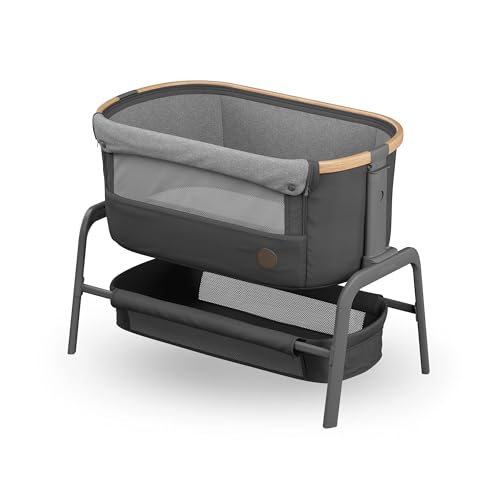How to Choose a Sale Cot
Mortuary cots are an essential piece of equipment for funeral homes and hospitals. They allow staff to transport bodies safely and with respect. They also provide a respectful and comfortable resting place for the body.
COTS items are important in the federal marketplace but can be difficult to manage. This blog will discuss how COTS are integrated into GSA schedules and other rules for government procurement.
Cost-effectiveness
The use of commercial-off-the-shelf (COTS) products allows procurement agencies to gain efficiencies by purchasing items that are readily available from the marketplace. This saves development time and cuts down on the cost of life. It also allows procurement agencies to maximize the benefits of technological advances and industry experience.
It is important to be aware that COT designations can be subjective, and different organizations may interpret COTS items in a different way. This can be problematic for a business that relies on a uniform method to calculate accurate government prices. GPOs and wholesalers for instance, typically have a list that is not the same as the list used by manufacturers to calculate government pricing. A documented SOP and a COTS reference library are crucial components in implementing an efficient and consistent methodology for determining COTs.
Reliability
A sale cot is a vital purchase for mortuary services. It should be reliable and sturdy enough to withstand high-use. It should be simple to transport, and to set up. The manufacturer should offer excellent support for customers in the event of any issues after sales. Take feedback from your employees before making a final decision. They will be the real users of the cots and will provide you with information about the durability and reliability of the cots.
Wholesalers and GPOs assign COT codes that are not in line with the list of the manufacturer. This is due to a variety of factors including changing business models, mergers and acquisitions. This makes it difficult to apply a subjective lens for evaluating COTS.
Durability
Durability is key for sale cots as they have to be able to withstand heavy use and frequent transportation. These cots are used by a variety of funeral homes to display the remains of deceased people. They must be strong enough to support the weight of caskets and other items. Cots should also be resistant to corrosion and possess an enduring structure that is easy to assemble and take apart. It is crucial to select an organization that provides customer service and is able to assist with any issues that may arise following the purchase.
Solid wood cots make the ideal furniture for babies, because they're durable and less prone to contain toxic chemicals or off-gassing than composite materials such as MDF or Chipboard. They also look more appealing than cheaper alternatives.
The Westport design from Silver Cross is a great alternative if you're looking for an cot and a lounge chair in one. The cot is made from an extremely durable material, and has three levels of height that are suitable for infants who are growing. The instructions can be difficult, but once you get it all figured out this cot will be a great addition to your family well.

The Helinox Cot One may be the tiniest cot, but it is not as durable as other models that we tested. It's also more difficult to assemble since it's made up of many components. top rated cots 's a comfortable cot and a great option for backpackers. It weighs 14 ounces less than the Thermarest Luxury Lite or Sleep Rite.
Safety
If you offer cots, it is important that they comply with the safety standards. This is a crucial step to prevent child injuries and deaths. The best method to accomplish this is by confirming with your supplier that their products have been tested independently. Ask them to provide you with a copy of the results. You can also arrange your own tests.
If you're buying a brand new cot or second hand it's crucial to make sure your cot is safe before you let your baby sleep in it. Look for a certificate of compliance from the manufacturer, along with detailed labels and warnings. It must be free of sharp edges, protrusions, or gaps that could hold a child's finger or leg. Also, there should not be footholds a child could use to climb out of the cot.
Check that the mattress of a cot is clean and flat. It should fit snugly, without gaps. The bottom edge of the rail shouldn't be higher than 30mm from the bottom of the mattress. If the base of the cot is adjustable, make sure it is set to its lowest position.
Check that the slats and filler bars have been firmly fixed, and that they do not have any tiny holes that could trap clothing. Bolts, nuts, and corner posts should not be more than 5mm from the ground to prevent children from getting their fingers caught. Make sure the cot isn't near curtains or blinds that can easily be pulled off by tiny hands.
Find an indication on the label that indicates that the cot has passed the obligatory tests and is compatible with Australian Standards AS/NZS2172:2003 Cots intended for use in homes Safety requirements. This is the only assurance that the cot is safe and suitable for sleep. It is against the law for antique stores, retailers and second-hand shops to offer antique cots with no labels or certificates.
Accidents can occur, despite the fact that the majority of designers and manufacturers try to ensure that their products are safe. Older cots used by other children may not be safe to use according to current standards, and they can pose risks of suffocation, strangulation or ingestion of foreign bodies.
